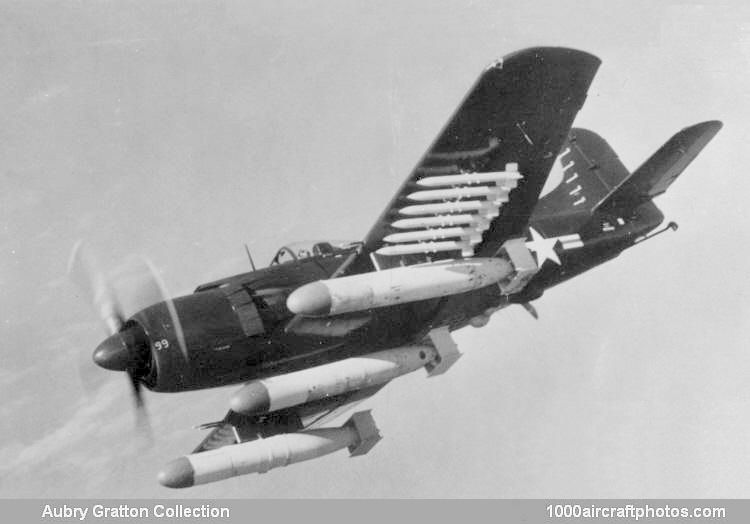This configuration had evolved over more than a decade, and the aircraft cast in this mould gave good service. By 1944, however, the nature of the war at sea had so changed that it was possible to consider a radical new configuration for an aircraft which would combine both the SB and TB functions. The largest available engine would be used, to obtain high performance and big ordnance load, but internal stowage was rejected as unnecessarily complex and too restrictive in choice of weapons.
The first order for a prototype of such a carrier-based attack aircraft was placed by the USN on the last day of 1943, for the Curtiss XBTC-l. Another similar type was ordered from Kaiser-Fleetwings on March 31, 1944; neither of these types passed the prototype stage. The Glenn L. Martin Company of Baltimore, Maryland, was luckier with its XBTM-1, two prototypes of which were ordered on May 31, 1944, although this did not achieve the success of the fourth of the single-seaters, the Douglas XBT2D-1 (later redesignated AD-1) ordered on July 21, 1944.
Designed as the Model 210, the Martin XBTM-1 made its first flight on August 26, 1944. Powered by a 3,000 hp Pratt & Whitney XR-4360-4 engine, it had four 0.787 in (20 mm) cannon in the wings and 15 strong points under the wings and fuselage to carry a record 10,689 lb (4,848 kg) ordnance load, including three torpedoes and twelve 250 lb (113 kg) bombs or other combinations.
Flight trials proved successful, and a production order was placed on January 15, 1945, for 750 BTM-1s. The designation changing to AM-1 Mauler before the first flight on December 16, 1946. Testing and carrier qualification trials continued during 1947, and delivery of the production aircraft to an operational unit began on March 1, 1948.
By the end of 1949 several units were flying the AM-1, but production was terminated in October that year, so that the Navy could standardize on one attack aircraft, the AD-1. A total of 151 aircraft were produced: 2 XBTM-1 prototypes (BuNos. 85161 and 85162), 143 AM-1 series aircraft (BuNos. 22257 to 22355; 122394 to 122437), and 6 AM-1Qs, adapted for radar countermeasures with additional equipment (BuNos. 122388 to 122393). During 1950 all Maulers were assigned to Reserve units to allow first-line squadrons to fly the AD-1s."
Span: 50 ft 0 in (15.24 m)
Length: 41 ft 2 in (12.55 m)
Height: 16 ft 10 in (5.13 m)
Wing area: 496 sq.ft (46.08 sq.m)
Weight empty: 14,500 lb (6,577 kg)
Loaded weight: 23,386 lb (10,608 kg)
Max speed: 367 mph (591 kmh) at 11,600 ft (3,536 m)
Cruise speed: 189 mph (304 kmh)
Climb: 2,780 ft (847 m)/min
Service ceiling: 30,500 ft (9,296 m)
Range: 1,800 mls (2,897 km)
